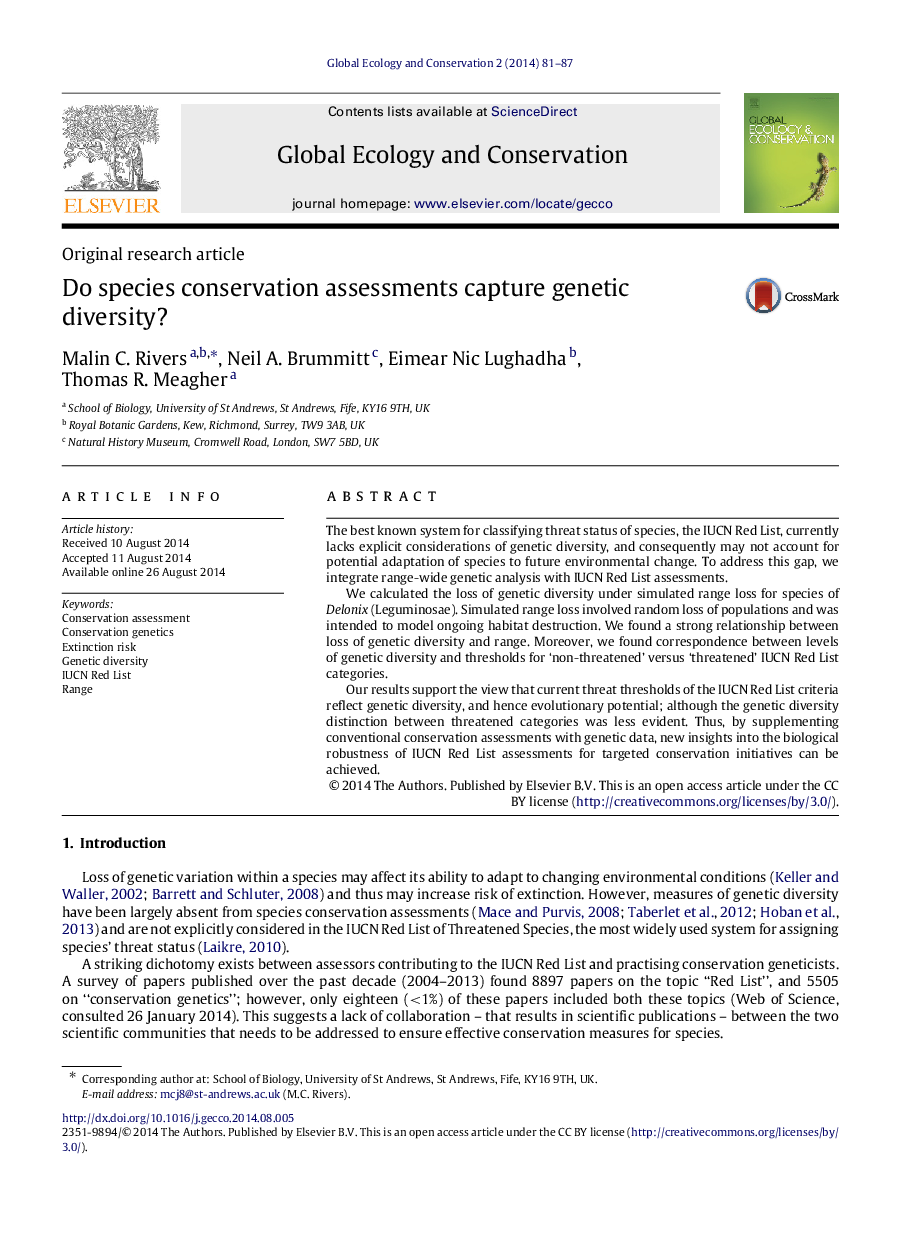| Article ID | Journal | Published Year | Pages | File Type |
|---|---|---|---|---|
| 4379671 | Global Ecology and Conservation | 2014 | 7 Pages |
The best known system for classifying threat status of species, the IUCN Red List, currently lacks explicit considerations of genetic diversity, and consequently may not account for potential adaptation of species to future environmental change. To address this gap, we integrate range-wide genetic analysis with IUCN Red List assessments.We calculated the loss of genetic diversity under simulated range loss for species of Delonix (Leguminosae). Simulated range loss involved random loss of populations and was intended to model ongoing habitat destruction. We found a strong relationship between loss of genetic diversity and range. Moreover, we found correspondence between levels of genetic diversity and thresholds for ‘non-threatened’ versus ‘threatened’ IUCN Red List categories.Our results support the view that current threat thresholds of the IUCN Red List criteria reflect genetic diversity, and hence evolutionary potential; although the genetic diversity distinction between threatened categories was less evident. Thus, by supplementing conventional conservation assessments with genetic data, new insights into the biological robustness of IUCN Red List assessments for targeted conservation initiatives can be achieved.
